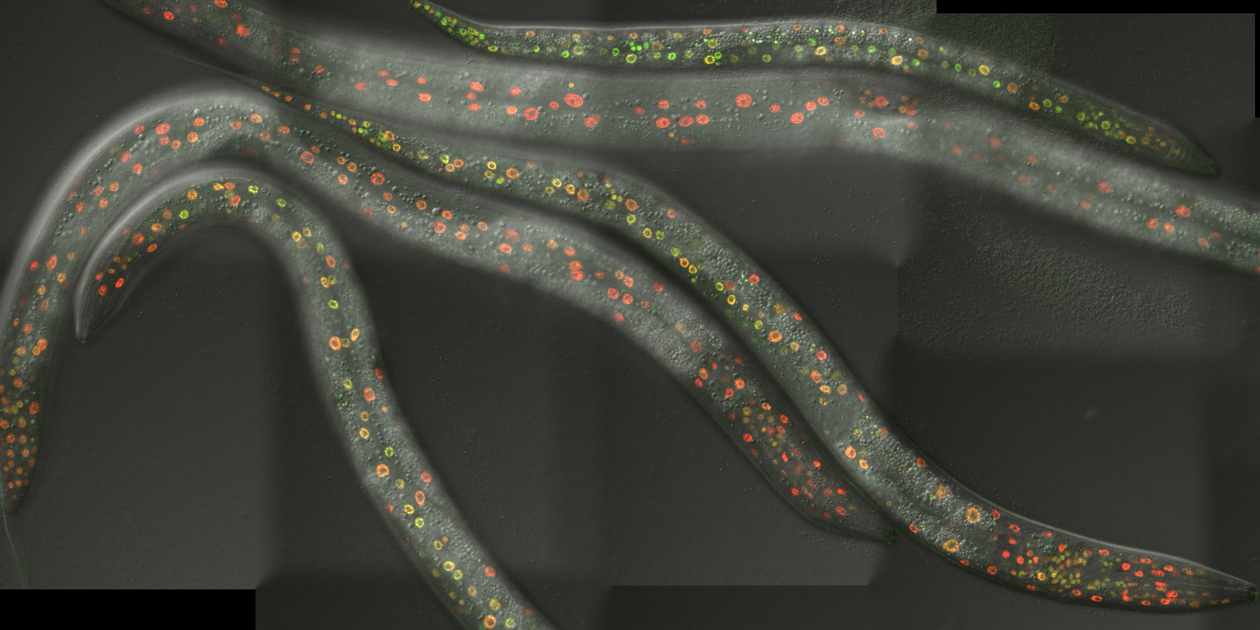miRNAs are not just "on" or "off"
Small noncoding RNAs, known as microR-NAs, regulate many biology processes by silencing target mRNAs. Studying the let-7 miRNA in C. elegans, Giovanna Brancati and Helge Großhans at the Friedrich Miescher Institute for Biomedical Research and University of Basel have now described mechanisms of target specialization of miRNAs, shedding new light on miRNA function.

let-7, highly conserved across animals and an important developmental regulator and tumor suppressor gene, is part of a family of sequencerelated miRNAs. The members of a specific miRNA family, or ‘sisters’, share an identical 5’ terminal ‘seed’ sequence. This part of the miRNA, comprising nucleotides two through eight, is considered the main determinant for target identification. Usually, target mRNAs contain ‘seed matches’, i.e. heptamers that base pair with perfect WatsonCrick complementarity to the miRNA seed. These were found to be necessary and sufficient for silencing in studies using ectopic miRNA expression. Hence, miRNA family members are thought to act redundantly on targets with perfect seed matches.
Recently, this dogma has proved “shaky” as sequences outside the seed, the ‘seed-distal’ parts where sisters differ from each other, were reported to promote silencing by individual miRNAs. As described in a Nucleic Acids Research Breakthrough Article, Brancati and Großhans now show, through in vivo studies in C. elegans, that the extent of specificity gained through the seeddistal pairing is real but modest. However, if target sites additionally contain imperfect seed matches, the seeddistal pairing can provide clear discrimination among miRNA sisters. In the case of let-7, this is indeed required to support robust temporal control of C. elegans development, by preventing inappropriate activity of let-7 sisters on a key target of let-7. In addition, the authors further reveal that different target site architectures require different miRNA concentrations for silencing.
Altogether, their results challenge a model of 'one size fits all', where at a given concentration, a miRNA is globally either ‘on’ or ‘off’ in a cell, silencing all of its targets at sufficiently high concentrations and none at low ones. Variable, target site-dependent activity was already speculated to be a miRNA feature in the early days of the miRNA field: miRNAs were likened to rheostats, whose activity is gradually adjusted by two features, namely the extent of target site complementarity to the miRNA and miRNA abundance. However, a lack of explicit experimental testing of such context-dependent function and the rising popularity of the ‘seed-match only’ model caused this hypothesis to fade from view. Brancati and Großhans propose that it is time to revisit the idea of miRNAs functioning as rheostats and subject it to further testing.
Brancati G. and Grosshans H. (2018) Nucleic Acids Research 46(7), 3259-3269 (open access)
Text by Roland Fischer